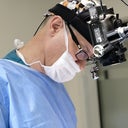I’ve been reading a lot about facelifts and several people have mentioned lumps and bumps from dissolvable sutures. I am 65 and considering a facelift. Most of what I have read says they take nine months to dissolve. Are they visible for 9 months? That does not fit with most descriptions of a facelift and how happy you will be by 4 to 6 weeks after.
Answers (6)
From board-certified doctors and trusted medical professionals
Dr. Brian K. Machida, MD, FACS

Dr. Brian K. Machida, MD, FACS
Board Certified Facial Plastic Surgeon
Answer
Dr. Suleyman Tas, MD, FEBOPRAS

Dr. Suleyman Tas, MD, FEBOPRAS
Plastic Surgeon
Answer
Dr. Ronald J. Edelson, MD

Dr. Ronald J. Edelson, MD
Board Certified Plastic Surgeon
Answer
Dr. William Portuese, MD
Dr. William Portuese, MD
Board Certified Facial Plastic Surgeon
Answer
More Facelift Questions
See all Facelift Q&AWE SEND PRETTY
EMAILS
What’s trending? Who’s turning heads? Which TikTok myths need busting? We’ve got you. No fluff, no gatekeeping—just real talk. Get our free, unfiltered newsletter.

